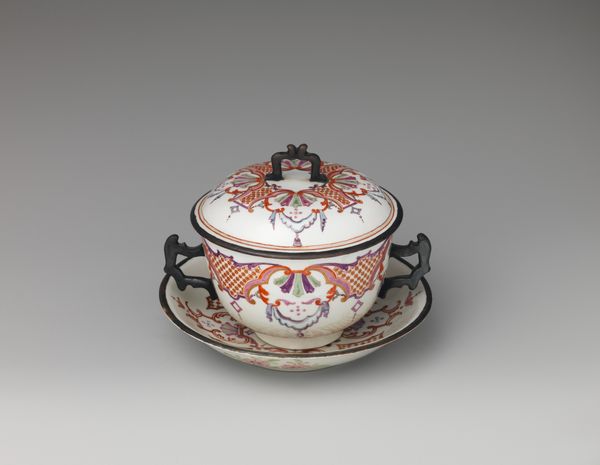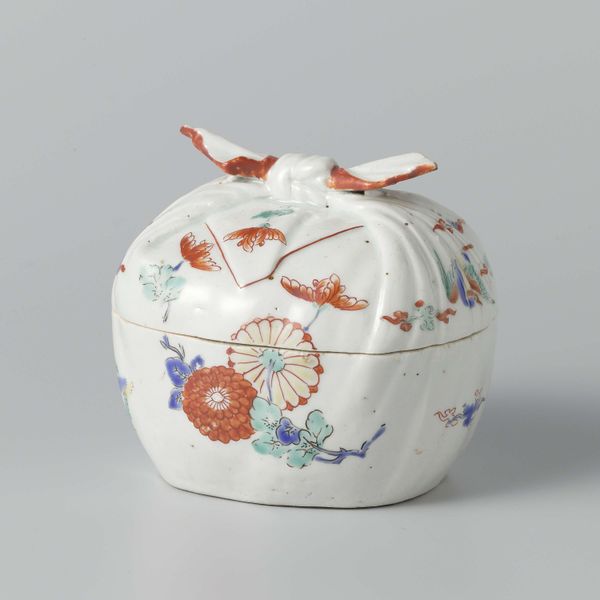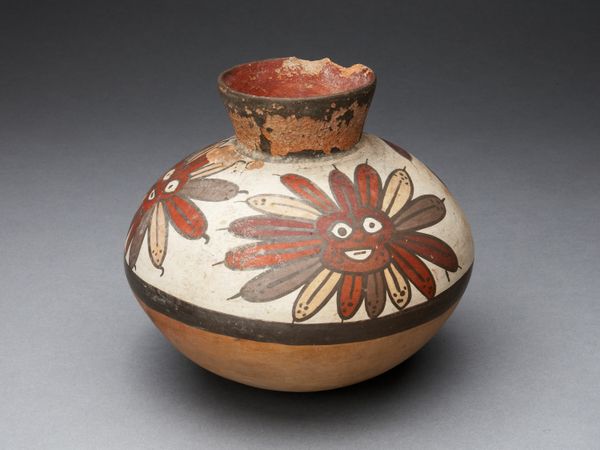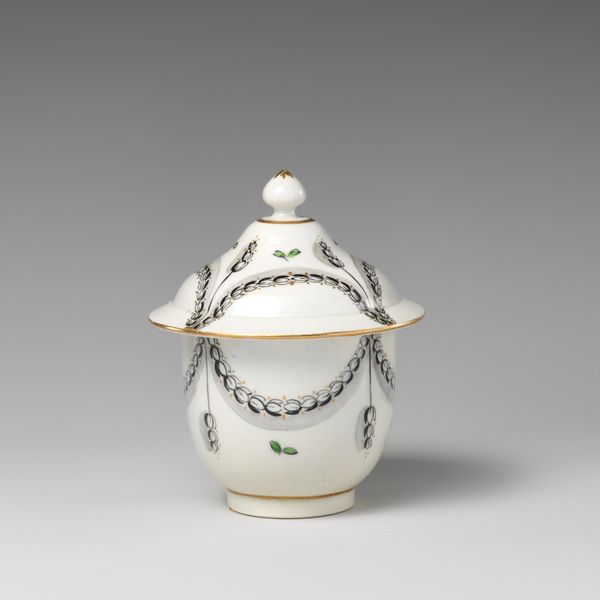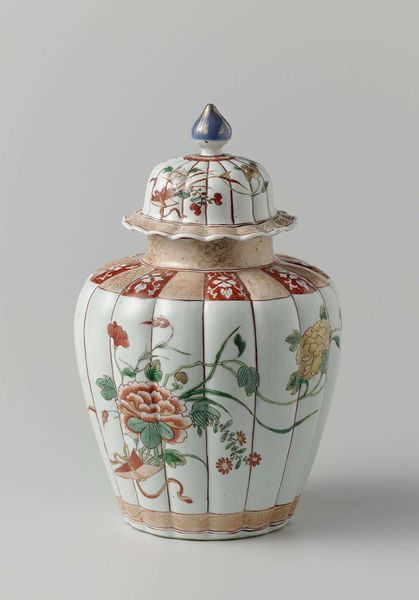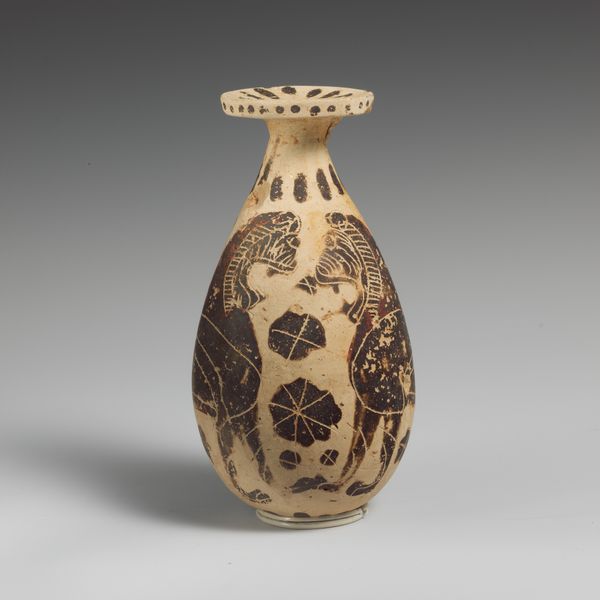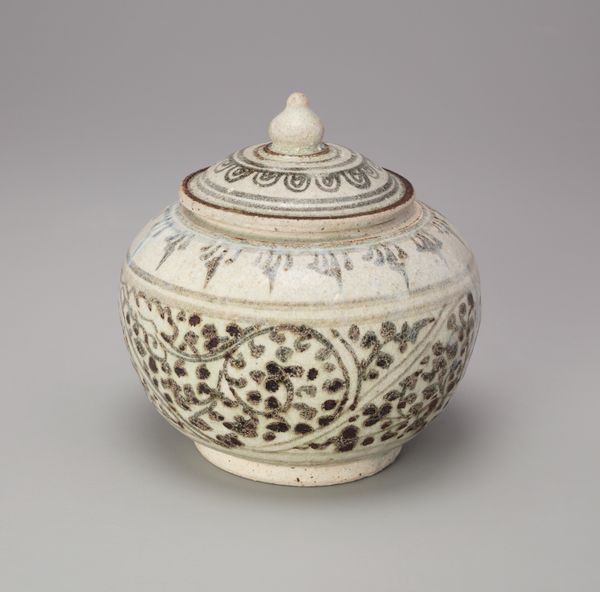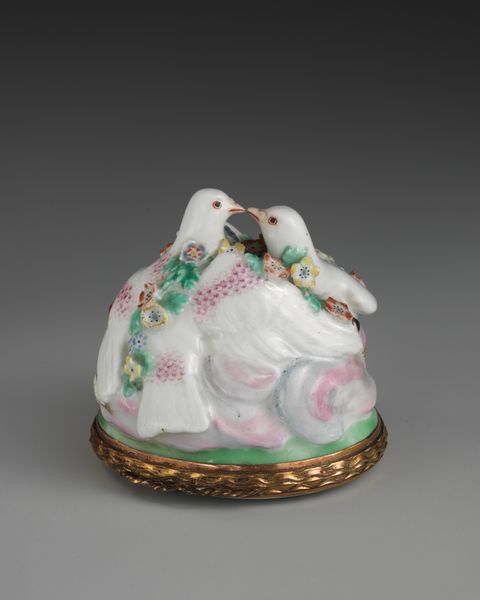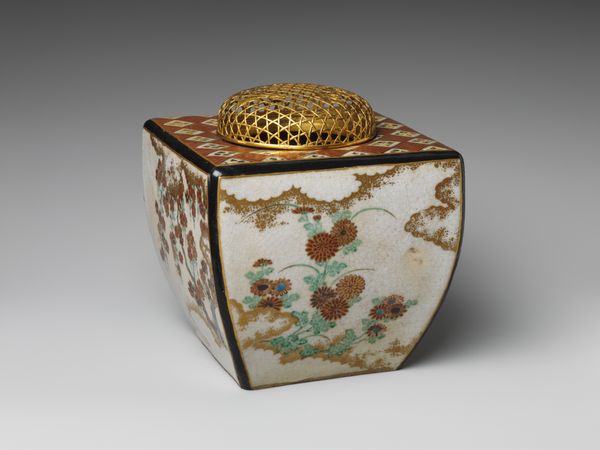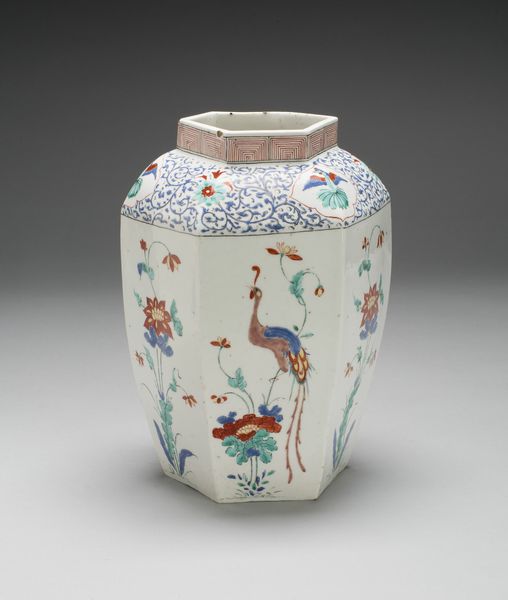
ceramic, earthenware
#
arts-&-crafts-movement
#
ceramic
#
earthenware
#
stoneware
#
plant
#
united-states
#
decorative-art
Dimensions: H. 5 1/2 in. (14 cm); Diam. 5 in. (12.7 cm)
Copyright: Public Domain
Curator: Here we have "Covered Honey Pot", crafted between 1882 and 1890 by Ott and Brewer. It's a stunning example of decorative art made with ceramic and earthenware. Editor: It’s immediately charming. The muted palette is very soothing. There’s a kind of sweetness here that invites close looking. I am intrigued to imagine the object’s functionality, not merely as utility but as an act of welcoming and sharing. Curator: Absolutely. Ott and Brewer were significant players in the American Arts and Crafts movement, which celebrated handcraftsmanship and design inspired by nature, countering the industrialization of the late 19th century. Their work reflected a societal yearning for simpler, more meaningful living. Editor: Thinking about the historical context of decorative art, objects like this honey pot push boundaries. Can this piece operate outside a rigid class structure? How can its aesthetic choices inform and influence public consciousness around sustainable design? Curator: Those are important points. This pot, while decorative, engages with notions of status and access. While accessible to look at, who really owned and used this type of decorative item? Editor: It is critical to consider gender roles here too. Historically, items like these often catered to bourgeois women whose roles included setting and serving tea. Did this confine or empower? The aesthetic reflects nature, a typical decorative subject in womanhood and its connection with home and nurturing. Curator: It certainly encourages discussion about the era's societal norms and the ways in which artists and designers engaged with them. It also invites a deeper examination of labor—the skilled artisans involved, their economic realities, and the market that fueled this type of production. Editor: And the imagery – cattails, berries, bees – creates this narrative of natural bounty and idyllic harvest, something the burgeoning industrial world perhaps longed for. I appreciate how such an everyday item elevates daily experience to art. Curator: This piece truly embodies how artistic expressions reflect cultural narratives and also influence those who come into contact with them. It leaves me thinking about how history lives on through seemingly ordinary objects. Editor: Yes, exactly. Examining decorative arts like the "Covered Honey Pot" offers tangible access to late nineteenth-century material culture and the ever-relevant dialogue around aesthetic and social consciousness.
Comments
No comments
Be the first to comment and join the conversation on the ultimate creative platform.
